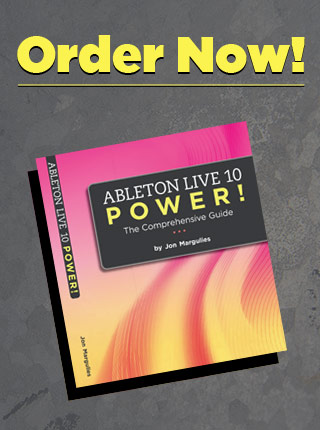Well folks, one week down, fifty one to go. While week one was dedicated entirely to some basic essentials, we’ll now move on other topics on an anything-goes basis…and now, some fun with delay!
Live has four delay devices (Simple Delay, Ping Pong Delay, Filter Delay and Grain Delay). All but the Grain Delay have a hidden feature you may not have explored yet: delay transition modes. The transition mode determines what the effect sounds like when the delay time is changed. For this example, we’ll use the Ping Pong Delay.
The delay transition modes are accessed by right clicking in the title bar of the delay effect:

The key thing to understand here is that you will only hear the difference in these three modes if you change the delay time after the effect has already started processing audio. So, before going any further get some signal passing through the delay and make sure to keep the feedback nice and high.
Now, change the transition mode to Repitch. This is going to make the delay act like an old delay stompbox or tape delay unit – changing the delay time will also change the pitch of the delay repeats. Changing the delay time is done by changing the selected value in the number grid, or if you really want to get your old-skool delay on, by switching to Time mode and adjusting it in milliseconds:
![]()
Jump mode is Live’s old behavior for delay transition: an abrupt change along with some clicky artifacts – great for you noisy types (you know who you are). Fade makes the effect behave like a Proper Modern Delay Plug-In: no repitching, no clicking, nice and smoove.





